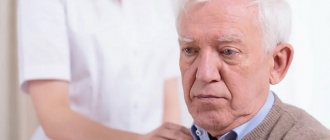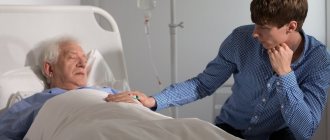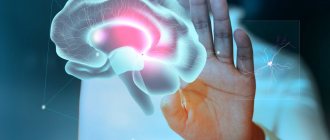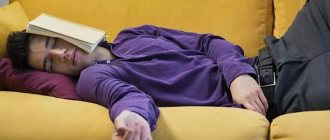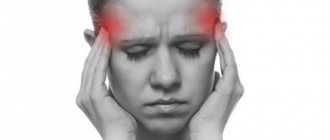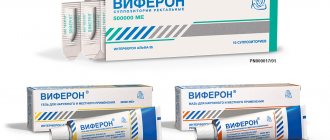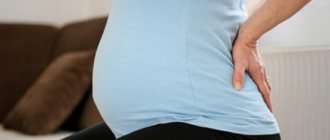Stroke is the third leading cause of death in developed countries after cancer and myocardial infarction, and is also the most common cause of disability. More than 85% of strokes are ischemic. They mainly develop due to blockage of a cerebral artery by a blood clot. In 20% of patients with acute cerebrovascular accidents, doctors at the Yusupov Hospital diagnose hemorrhagic stroke (bleeding in the brain). The Neurology Clinic has created all the conditions for treating patients with different types of strokes:
- chambers of European comfort level;
- diagnostics using modern neuroimaging methods;
- individual approach to the treatment of each patient;
- use of the latest highly effective drugs that have minimal side effects.
Severe cases of stroke are discussed at a meeting of the Expert Council with the participation of professors and doctors of the highest category. Leading specialists in the field of vascular pathology of the brain collectively make decisions regarding the treatment of patients with stroke. If necessary, patients are consulted by neurosurgeons at partner clinics and minimally invasive neurosurgical interventions are performed. Emergency measures for brain resuscitation in acute cerebrovascular disease and general clinical assessment of neurological functions are carried out in the intensive care unit.
Stroke: clinic and treatment
Treatment of acute stroke will be more successful if you consult a doctor in a timely manner. If you or a loved one:
- concerns about dizziness, nausea, weakness or numbness in the limbs;
- there were difficulties in swallowing, speech functions were impaired;
- drowsiness, inability to adequately respond to what is happening around;
- inability to maintain a stable position, impaired consciousness.
In this case, a hemorrhagic or ischemic stroke of the brain can be suspected in time, the treatment of which should be carried out only in a hospital setting.
Symptoms of a stroke
The first signs of a stroke The first signs of a stroke are:
- violation of speech coherence. It is difficult to understand what the person is saying;
- the appearance of facial asymmetry. Facial expressions are disturbed; as a rule, one side suffers. If you ask a person in this state to smile, the smile will come out crooked;
- severe weakness of the limbs. As a rule, the limbs on one side are affected (right arm and right leg or left arm and left leg). If a person is asked to raise both arms at the same time, one of them will lag noticeably or will not be able to move at all;
- blurred vision. In this case, one pupil will be dilated more than the second, and chaotic movement of the eyeballs is possible. The patient may feel tightness in the eyes and complain of double vision.
How can you tell when someone is having a stroke?
As a mnemonic rule, you can associate the signs of a stroke with the word IMPACT:
"U" - smile
“D” – hand movement
“A” – articulation
“R” - “solution”: if these signs are undeniable, you need to call an ambulance.
Other manifestations of a stroke may include:
- confusion of consciousness. A person who has suffered from a stroke does not understand well what is being said to him;
- dizziness;
- Strong headache
Effective treatment of stroke: innovative technologies to protect your health
Therefore, the global medical community has developed not only a program whose goal is to prevent stroke, treating the consequences and restoring the body takes a large part in their research. Our specialists take an active part in scientific research and have created their own effective program that literally gets patients back on their feet. Modern treatment makes it possible to restore the functionality of the limbs, relieve dizziness and dysfunction of the speaking apparatus. Of course, once a stroke is diagnosed, hospital treatment becomes mandatory.
We are able to bring an atmosphere of home comfort into a hospital environment and provide psychological comfort to the patient. The stroke treatment center ensures that the patient will be provided with everything necessary, including equipment for rehabilitation and examination, the involvement of outside specialists and studies will not be needed anywhere else.
Stroke treatment is carried out in Moscow; convenient transportation simplifies contact between relatives and patients, and gives them the opportunity to visit the patient as much as possible and necessary.
Stroke. How long are they in the hospital?
Poor blood circulation in the brain, in other words, stroke, treatment involves three stages:
- prehospital;
- stay in the intensive care unit;
- treatment in a general ward.
The length of stay of a patient in a hospital, according to treatment standards, is 21 days, provided the patient has no violations of vital functions, and 30 days in case of serious violations. When the length of a patient’s stay in a hospital is insufficient, a medical examination is carried out followed by the development of an individual course of rehabilitation.
The Yusupov Hospital employs highly qualified doctors, and after being treated by them, most of even the most severe patients return to a full life. The professionalism of doctors plays a huge role in the effectiveness of therapy and rehabilitation. Neurologists at the Yusupov Hospital develop an individual treatment plan for each patient.
Patients stay in the intensive care unit as long as they need to fully recover. During this period, doctors strictly monitor the patient’s vital functions in order to avoid serious complications caused by damage to brain tissue.
All patients diagnosed with stroke are subject to hospitalization. The length of stay in intensive care depends on a number of factors, including:
- depression of vital functions;
- degree of damage to brain tissue. With a major stroke, patients stay in intensive care longer;
- the need for constant monitoring if there is a high risk of recurrent stroke;
- severity of the clinical picture;
- level of depression of consciousness and others.
Stroke treatment: what do we offer?
In order to completely eliminate a cerebral stroke, treatment must be carried out under the supervision of highly professional doctors. Specialization of our doctors:
- Ischemic stroke of the brain, the treatment of which is quite successful even in very complex cases when one side of the body is paralyzed.
- Hemorrhagic stroke is a disease whose course is not accompanied by paralysis, but nevertheless requires an immediate response from doctors. The slightest delay or lack of professionalism can lead to disability, so do not experiment - call us immediately.
Upon entering our clinic, the patient immediately undergoes simple and perfusion computed tomography, as well as tomography of the neck vessels. The drug treatment for stroke depends on the results of the examination. Also, if necessary, invasive diagnostic angiography is performed, which will determine the location and size of the blood clot. Also, during the procedure, the blocked artery can be cleared mechanically.
In each specific case, depending on what kind of stroke is diagnosed, the cost of treatment may vary. The recovery plan is developed individually.
If a cerebral stroke is diagnosed, treatment may include:
- Drug therapy that will expand the lumen in the vessel and allow blood to flow freely.
- Surgery, including anatomical bypass, arotid endarterectomy of cerebral vessels, or installation of stent grafts in the carotid artery.
- Physiotherapy and rehabilitation treatment after a stroke will allow you to gain the opportunity to lead a full life. Exercise therapy specialists work with each patient according to an individually developed program for getting rid of the consequences of a stroke, which makes treatment even faster and more effective.
We cannot always predict the development of the situation, but we can say one thing for sure - stroke treatment in the hospital is carried out by doctors who make every effort to achieve a high result. We work to ensure that you live a full life.
Algorithm for managing a patient with ischemic stroke
Acute stroke is one of the leading causes of morbidity and mortality worldwide. According to WHO, stroke is the second most common cause of death. In Europe, about 1 million acute ischemic strokes (IS) occur every year. More than 400 thousand strokes are registered annually in Russia, of which 80-85% are ischemic. Until recently, views on the problem of emergency care for stroke patients were dominated by “therapeutic nihilism.” However, improved understanding of pathophysiological processes and new treatment technologies have changed the management of stroke patients.
The main stages of medical care for acute cerebrovascular accident (ACVA) are the following: prehospital, hospital, outpatient.
Pre-hospital stage
It includes the diagnosis of stroke, emergency treatment measures, as well as emergency hospitalization of the patient. Here it is necessary to call an emergency doctor, who must first examine the patient, collect anamnesis, exclude other causes of deterioration of the condition (they may be hyperglycemia, hypoglycemia, poisoning, infection, traumatic brain injury, fainting, migraine, renal or liver failure), and finally , establish a diagnosis of stroke of an as yet unspecified nature.
The main role in this case is played by the anamnesis, carefully collected from the words of relatives, those around or the patient himself, as well as the characteristics of the development of neurological disorders over time. Sudden and acute, within a few seconds or minutes, development of a neurological deficit in the form of weakness and/or numbness of the limbs, face and, often, speech impairment in persons, usually middle-aged or elderly, against the background of significant emotional, physical stress or immediately after sleep, taking a hot bath, with high or, conversely, low blood pressure allows you to accurately diagnose stroke.
The main stages of medical care for acute cerebrovascular accident:
1. Pre-hospital.
2. Hospital.
3. Outpatient clinic.
The onset of a stroke is usually accompanied by the sudden onset of the following symptoms in the patient:
However, we must remember about the possible development of other symptoms and their combinations. These are, for example, various types of disturbances in the level of wakefulness from stupor to stupor and coma, swallowing or coordination of movements; the appearance of double vision, dizziness.
Emergency treatment measures
The emergency measures of the emergency medical team upon arrival to a stroke patient should include a set of mandatory measures that are carried out immediately after a general examination of the patient.
Assessing the adequacy of oxygenation and its correction
Inadequate oxygenation is indicated by:
increased frequency and arrhythmia of respiratory movements;
cyanosis of visible mucous membranes and nail beds;
participation in the act of breathing of auxiliary muscles;
swelling of the neck veins.
The simplest way to improve oxygenation is to supply the patient with oxygen through the nasal passages at a rate of 2-4? l/min. Ensuring effective oxygenation, if necessary, is carried out by installing an airway and clearing the respiratory tract. For breathing problems, the following are contraindicated: lobeline hydrochloride (depresses breathing, can provoke tonic-clonic convulsions, lowers blood pressure (BP) and causes vomiting); cytisine (has a very short-term effect and does not stabilize normal breathing); camphor, procaine with sulfocamphoric acid, niketamide (promote the development of convulsive syndrome and depress breathing).
Correction of circulatory disorders
It is carried out by stabilizing blood pressure at 180/100 mm Hg. Art. in patients with arterial hypertension and at a level of 160/90?mm?Hg.?st. in normotensive people. Blood pressure should not be reduced in cases where it exceeds the specified values by more than 15-20% of the original values. The most commonly used are captopril 6.25-12.5 mg or enalapril 5-10 mg. If the effectiveness is insufficient, it is possible to administer 1-2 ml of a 1% solution of proxodolol intravenously over 1 minute, again every 5 minutes until the effect is achieved, but not more than 10 ml of a 1% solution. It is not recommended to prescribe nifedipine due to the risk of a sharp decrease in blood pressure.
For arterial hypotension, the use of sympathomimetics, drugs that improve myocardial contractility (cardiac glycosides), and volume-replenishing agents (low molecular weight dextrans, starches and crystalloid solutions) is recommended.
Relief of psychomotor
excitement, seizures
For this purpose, short-acting benzodiazepines administered intravenously are used: diazepam 0.2-0.4 mg/kg, midazolam 0.2-0.4 mg/kg. If ineffective, sodium volproate is used (iv 6 mg/kg for 3 minutes, followed by a transition to 1-2 mg/kg/h); sodium thiopental (the bottle is dissolved with 10 ml of physiological sodium solution and administered intramuscularly at the rate of 1 ml per 10 kg of patient weight).
Determination of blood glucose levels
and its correction
Blood glucose levels are determined using a standard rapid test. Correction at high glucose levels is carried out with simple insulin, at low levels - using an intravenous 40% glucose solution. If it is not possible to determine blood glucose, but a violation of carbohydrate metabolism is suspected, one should be guided by the rule: hypoglycemia is more life-threatening than hyperglycemia. Based on this, intravenous administration of 50-60 ml of 40% glucose is recommended. In the presence of hypoglycemia, this can save the patient, while at the same time, in case of hyperglycemia, additional administration of this amount of glucose will not lead to tragic consequences.
The primary objectives of providing medical care to patients with acute severe stroke at the prehospital stage are maintaining vital functions and immediately transporting the patient to the appropriate hospital. The only contraindication for hospitalization of a patient with stroke is his agonal state.
Hospital stage
Upon admission of the patient to the hospital, all subsequent measures should be carried out as quickly as possible. This primarily applies to patients whose stroke developed less than 3 hours ago and there is still the possibility of determining the nature of the stroke and performing thrombolysis for its ischemic origin.
Thrombolytic therapy for IS should be carried out in emergency hospitals, in a neurointensive care unit or intensive care unit, subject to the mandatory presence in the hospital structure of round-the-clock neuroimaging services using computed or magnetic resonance imaging and laboratory diagnostics.
Thrombolysis can be carried out only after excluding the hemorrhagic nature of brain damage. It is also desirable to initially conduct and monitor transcranial Doppler ultrasound to clarify the fact of arterial occlusion, verify the localization of occlusion and monitor the gradual opening of the vessel.
The most important tasks in providing medical care to patients with acute severe stroke at the prehospital stage are maintaining vital functions and immediately transporting the patient to the hospital. The only contraindication for hospitalization of a patient with stroke is his agonal state.
It is necessary to strive as much as possible to reduce the time from the moment the patient is admitted to the hospital until the start of intravenous administration of alteplase (time “from door to needle”).
- The emergency physician must telephone the intensive care unit of the neurological department to inform him that he is transporting a patient with an ischemic stroke who is indicated for thrombolytic therapy.
- The unit's neurologist meets the patient in the emergency department and transports him, along with the medical staff of the emergency department, to a computed tomography scan. During transportation and carrying out this examination, the medical history is clarified from relatives or the patient himself.
- Examination and assessment of neurological status using the NIHSS scale.
- Measuring blood pressure levels in both arms.
- Installation of a cubital peripheral venous catheter.
- Measuring serum glucose levels.
- Draw blood and perform the following laboratory tests:
- platelet count;
- activated partial thromboplastin time;
- international normalized ratio (INR).
- If the patient meets the criteria for inclusion in thrombolytic therapy, after examination by a neurologist and a computed tomography scan of the brain, it is necessary to monitor the following vital functions in the unit for at least 48 hours:
- blood pressure level;
- heart rate (HR);
- respiratory rate (RR);
- body temperature;
- oxygen saturation (SaO2).
I emphasize that the administration of alteplase should be started as early as possible from the onset of the disease. The recommended dose is 0.9 mg/kg body weight (maximum dose 90 mg). 10% of the total dose for the patient is administered as a bolus intravenously over 1 minute. The remaining dose is administered intravenously over 1 hour.
During and after thrombolysis, monitoring of basic vital functions is extremely important: blood pressure, heart rate, respiratory rate, body temperature, SaO2. During the thrombolytic therapy procedure, it is necessary to monitor the dynamics of the neurological status; the most optimal is to use a scale for assessing neurological deficit (NIHSS scale).
A set of measures required to be carried out in a hospital:
- general medical activities—observation and care of the patient;
- prevention and treatment of major neurological complications;
- special treatments for stroke;
- prevention and treatment of extracerebral complications;
- rehabilitation measures;
- measures for early prevention of recurrent stroke.
Monitoring the patient
Monitoring the patient is necessary to develop adequate tactics for its management and includes a number of measures: monitoring of neurological status, blood oxygenation, blood pressure, ECG, intracranial pressure and cerebral perfusion pressure, central venous pressure; control of the main parameters of homeostasis.
Patient care
Caring for patients in the acute stage of a stroke, who often not only cannot turn over in bed on their own, but are also unconscious, is also an extremely responsible undertaking. It should include doing the following daily:
- turns from side to side;
- wiping the body;
- regular enemas and bladder emptying;
- administration of adequate fluid volume;
- toilet of the oro- and nasopharynx;
- sanitation of the tracheobronchial tree (during artificial ventilation of the lungs);
- control of swallowing and feeding;
- prevention of stress ulcers of the gastrointestinal tract;
- antibacterial therapy as indicated;
- prevention of DIC syndrome and pulmonary embolism;
- conducting passive gymnastics and massage.
Treatment of major neurological complications
The main pathogenetic changes in the brain during the development of cerebral infarction, accompanied by characteristic neurological disorders, include the following: cerebral edema and acute obstructive hydrocephalus.
To treat cerebral edema, hyperventilation is necessary under conditions of artificial ventilation, reducing PaCO2 to a level of 30 mm Hg. Art. Of the osmotic diuretics, mannitol is most often used intravenously drip at an initial dose of 0.5-2.0 g/kg body weight for 20-25 minutes, and then at a dose of half the original every 4-6 hours, no more 3-4 days. In the absence of mannitol or in case of unreplenished hypovolemia, 100-150 ml of 3% sodium chloride solution is administered intravenously every 3-6 hours for the same period.
The following model is optimal
staged rehabilitation after stroke:
Stage 1 – rehabilitation begins in the neurological department of the hospital, where the patient is taken by an ambulance;
Stage 2 – at the end of the acute period with complete restoration of impaired functions, the patient is discharged for outpatient follow-up treatment or transferred to a sanatorium, and the patient with severe motor deficit is transferred to the rehabilitation department.
Stage 3 – outpatient rehabilitation, rehabilitation at home.
The main treatments for acute obstructive hydrocephalus are drainage of the lateral ventricles, decompression of the posterior cranial fossa, and/or removal of necrotic tissue from cerebellar infarction.
Neuroprotection
Neuroprotection is a set of universal methods for protecting the brain from structural damage. It should begin at the prehospital stage of treatment and continue in the hospital.
For the purpose of metabolic protection of the brain in any type of stroke, drugs that correct energy metabolism, antioxidants and agents with neurotransmitter and neuromodulator effects are used:
- piracetam 12 g intravenously;
- glycine sublingually 1-2? g per day;
- Semax 1% 3 drops endonasally;
- deproteinized hemoderivat intravenous 10-20% infusion solution, 250 ml;
- magnesium sulfate 25% 20.2 ml in 200 ml of isotonic sodium solution intravenously 2 times a day;
- methylethylpyridinol 15 ml of 1% solution intravenously;
- Cerebrolysin 10-30 ml intravenously;
- Cortexin 10 mg intramuscularly;
- ethylmethylhydroxypyridine succinate 200-300 mg intravenously;
- choline alfoscerate 1 g intravenously, etc.
Antiplatelet drugs
- acetylsalicylic acid 1 mg/kg body weight;
- dipyridamole 25 mg 3 times a day;
- clopidogrel 75 mg once a day;
- pentoxifylline 200 mg intravenously, etc.
Vasoactive drugs
- vinpocetine 10-20 mg intravenously;
- nicergoline 4 mg intramuscularly;
- aminophylline 10 ml intravenously, etc.
Improving cerebral perfusion and improving the rheological properties of blood
- reopolyglucin 200-400 ml intravenously;
- dextran 400 ml intravenously.
Direct anticoagulants - according to indications
- heparin 5000 units 4-6 times a day subcutaneously;
- fraxiparine 7500 units subcutaneously 2 times a day.
Indirect anticoagulants (oral anticoagulants)
- warfarin 2-5 mg per day under INR control;
- phenindione 100 mg/day.
Outpatient stage
Rehabilitation is a set of measures (medicinal, physical, pedagogical, psychological, legal) aimed at restoring functions impaired as a result of the disease, social adaptation, quality of life, and, when possible, ability to work. Rehabilitation should also include the prevention of post-stroke complications and the prevention of recurrent strokes. The duration of rehabilitation is determined by the timing of restoration of impaired functions. It should be remembered that the maximum improvement in motor functions is observed in the first 6 months, everyday skills and ability to work - within 1 year, speech functions - within 2-3 years from the moment of stroke development.
The following model of staged rehabilitation after a stroke is optimal:
- Stage 1 - rehabilitation begins in the neurological department of the hospital, where the patient is taken by an ambulance;
- Stage 2 - at the end of the acute period with complete restoration of impaired functions, the patient is discharged for outpatient follow-up treatment or transferred to a sanatorium, and the patient with severe motor deficit is transferred to the rehabilitation department.
- Stage 3 - outpatient rehabilitation, rehabilitation at home.
Minimally invasive surgery: gentle treatment after ischemic stroke
One of the most common ways to neutralize the consequences of a stroke is treatment using a technology such as thrombolysis. During an angiogram, a drug is injected directly into the area where the blood clot has formed. The blockage disappears and blood circulation is restored.
Additionally, drugs are introduced that improve metabolic processes in the brain, so that after a stroke, treatment is faster and more effective. Delay is unacceptable; a diagnosis such as stroke can be treated in a hospital well with a timely response from doctors, when the brain has not yet received irreversible damage.
Basic and differentiated therapy
Treatment of a patient in the intensive care unit involves basic and differentiated therapy.
Basic treatment is aimed at:
- fight against cerebral edema;
- restoration of normal functioning of the respiratory system;
- patient nutrition;
- maintaining hemodynamics at an acceptable level.
Differentiated therapy involves:
- normalization of arterial and intracranial pressure, elimination of cerebral edema after hemorrhagic stroke. In the first two days, a decision is made regarding the need for surgery. Neurosurgeons at the Yusupov Hospital daily perform surgical interventions to eliminate the consequences of stroke and save the lives of hundreds of patients. All manipulations are carried out using modern medical equipment using effective proven techniques;
- accelerating metabolic processes, improving blood circulation and increasing the resistance of brain tissue to hypoxia when diagnosed with ischemic stroke. The length of stay in intensive care directly depends on the timely and adequate course of treatment.
In most cases, young people recover much faster than older patients.
It is possible to transfer a victim from the intensive care unit to a general ward after meeting a number of criteria:
- the patient can breathe independently, without the support of devices;
- the patient is able to call a nurse or doctor for help;
- there is a stable level of heart rate and blood pressure;
- the possibility of bleeding is excluded.
Only after the patient's condition has stabilized can the doctor transfer the patient to the ward. In a hospital setting, various rehabilitation procedures are prescribed to quickly restore lost functions.
In the neurology department of the Yusupov Hospital, patients are not only developed an individual course of rehabilitation therapy, but also given psychological support.
If necessary, psychologists work with loved ones and relatives of the patient to teach them the basics of caring for a person who has suffered a stroke.
Physiotherapy: stroke treatment, inpatient rehabilitation
How else can modern medicine help? Stroke treatment and rehabilitation must be comprehensive, including physical therapy. Stimulation of the nervous system will help restore brain cells and restore lost functions to a person.
Once a left-sided stroke is diagnosed, treatment may include:
- massage;
- classes with a neuropsychologist and psychotherapist;
- physical exercise.
Not everything, of course, depends on the doctors - recovery will be faster if the patient himself makes every effort and does not give up. For our part, we will make every effort to create a favorable atmosphere.
The page is for informational purposes only. Find out the exact list of services provided and the specifics of the procedures by calling.
What to look for the reason?
Stroke is a short word, like a shot, dividing life into “before” and “after,” including the roar of an ambulance, the smell of a hospital, the tears of relatives, a wheelchair and a long return to normal life.
About half a million strokes occur in Russia every year, and only 20% of patients return to work after it. 60% of stroke survivors become disabled and 20% require outside care. There are two causes of stroke: hemorrhage in the brain as a result of a ruptured vessel or, conversely, blockage of a vessel supplying blood to the brain as a result of a blood clot breaking off or the lumen becoming “overgrown” with an atherosclerotic plaque. 80% of all strokes are associated precisely with the occurrence of an obstruction to blood flow in the vessels supplying blood to the human brain. About 30% of such strokes occur precisely because of the appearance of an obstruction in the vessel caused by an atherosclerotic plaque or, in other words, carotid artery stenosis. The artery, like a water pipe, is “overgrown” with atherosclerotic plaques and does not allow blood to flow into the brain. This does not happen immediately, but over many years, and when the degree of narrowing becomes large, the brain ceases to have enough blood for its functions, and the surface of the plaque becomes “rough,” and this is the cause of a blood clot in the artery.
